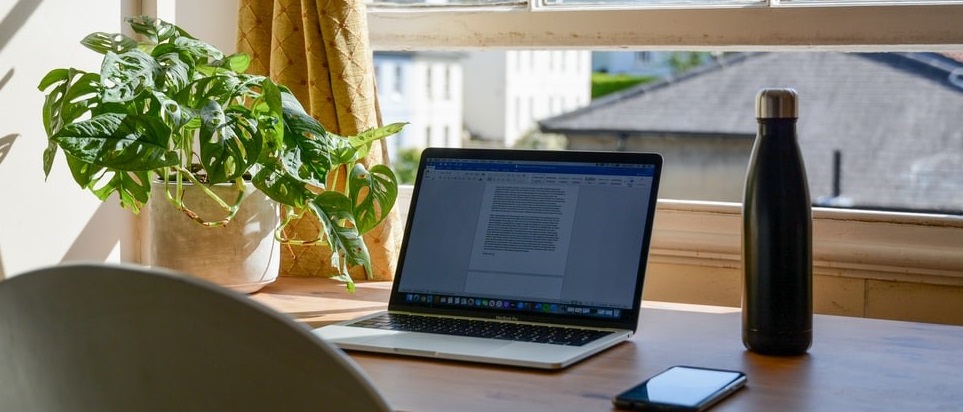Pre-COVID, it was common to focus on profitability over the physical and mental wellbeing of yourself and your employees. It was a badge of honour to work late from an office, to keep working even when ill, and to put business before your personal needs. In the wake of COVID-19 restrictions, businesses are preparing to reopen with revamped policies meant to keep their employees and customers safe.
Businesses are transitioning from being apathetic to staff wellness to prioritizing mental and physical health, over established business norms.
The challenges of COVID-19 can get stressful, but by making the most of your down-time you can get a handle on your financial situation and profits while also restructuring best practices to protect your employees and customers. In many ways, the changes businesses are making are for the better regarding both productivity and workplace happiness. So what will the post-pandemic office look like?
The Post-Pandemic Office – Physical to Digital
To prevent or mitigate a second phase of COVID-19, businesses should place specific attention to the care of their employees and customers to reduce spread of the virus. While providing sanitation equipment is important for staff still commuting to the office, another key method of preventing an outbreak is working remotely.
Working in Compliance with WHO Recommendations
In preparation of businesses reopening, the World Health Organization (WHO), set key guidelines to ensure that you, your staff, and your customers are safe. One safety measure they promote is working remotely.
Remote working is a definite shift from the mentality that effective and prized employees work from in an office. However, providing the remote infrastructure to employees meets WHO suggestions without sacrificing productivity. There are three measures WHO outlines that can be met by investing in teleworking software:
Promote Regular Teleworking
Encouraging teleworking reduces the number of employees in the office, helping to comply to regional restrictions on large gatherings or use of public transportation. Further, in the case of another COVID-19 spike, your employees have the infrastructure to work from home productively and safely.
Stay at Home When Sick
Pre-COVID, going into the office and risking the spread of illness was a small concern. Now, spreading your germs can have deadly consequences. With the infrastructure to work remotely, employees can continue to be productive but in a comfortable environment without risking the health and safety of their co-workers.
Comply with Local Restrictions on Travel, Movement, or Large Gatherings
A large part of business is attending meetings and business trips. However, COVID-19 effects different regions in different extremes. Before booking a large in person meeting or planning a business trip; consider your local restrictions on large gatherings or consult regional officials for the latest restriction guidelines. Scheduling an online meeting using Zoom, GoToMeeting or Webex for example could turn out to be safer and more cost effective.
Working Productively with Flexibility
Providing the infrastructure to work remotely adds flexibility to business and can increase your overall productivity. We’ve identified three areas where changing our mindsets to include remote workers as a norm can boost productivity:
No Commuting
A large part of some employee’s days is the commute. Commuting to an office can take hours, which could be better spent working or focusing on personal wellbeing. Either way, work productivity is impacted. If your staff is well rested and focused, they will be more productive during business hours. Further, if they have a few extra hours to work on a key project rather than sitting on a bus or in a car, then the job can be completed quickly and more efficiently.
Higher Workplace Happiness
When you’re able to work comfortably in an environment that allows for positive mental health and physical wellbeing, motivation and enthusiasm for work increase. Further, if your staff approaches tasks with a positive outlook, they will work more diligently. Allowing the flexibility for them to care about themselves as well as their work increases workplace happiness and productivity.
Less Risk
When flexible infrastructure is available, there is less risk of dipped productivity during an emergency. In the event of another spike in COVID-19, having the flexibility to work remotely already established allows you and your staff to continue working without interruption, so you can focus on your business rather than face another setback or break.
The Bottom Line: With today’s technology and software, the hurdles of collaboration and communication are minimized. At the same time, the profitability of remote working can far out way the risks associated dealing with viral or climate-based impediments.
Reopen your Business Focused on Staff Wellness and Flexibility
COVID-19 caused a set-back, but it’s helped us to pin-point what infrastructures and best practices we need to reopen our businesses stronger than before. It’s time to pivot our strategies to focus on flexibility and staff wellness to the benefit of productivity and profitability.
If you’d like to learn more about how to mitigate the impacts of COVID-19, and pivot your best practices, contact us.





Comments are closed.